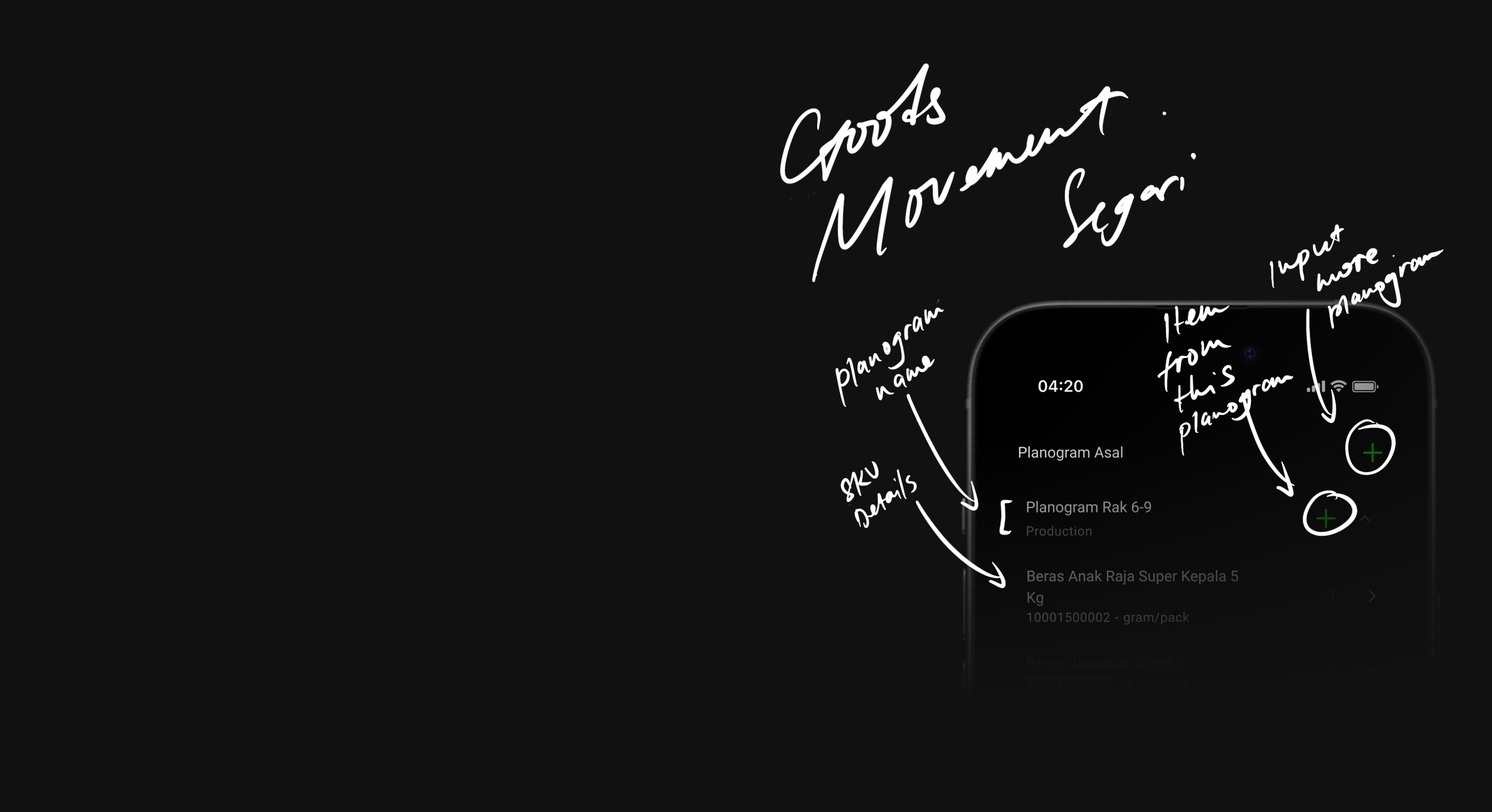
Goods Movement
THE HEART OF THE E-GROCERY
ROLE
UX Designer
TOOLS
Figma
MIRO
Duration
2022-Present
✦ PROBLEMS & CONTEXT
At the time, Segari didn't have the proper tools to record goods movement. Even though the IT databases were already built and can be accessed through a computer, most of the field work was still done manually using paper and it led to inefficiency and data inaccuracy. These low hanging fruit problems eventually led to the idea of creating a mobile app -- reason being for its mobility and how it fits most of the field work context (compared to a PC app).
LOADING CONTENT...
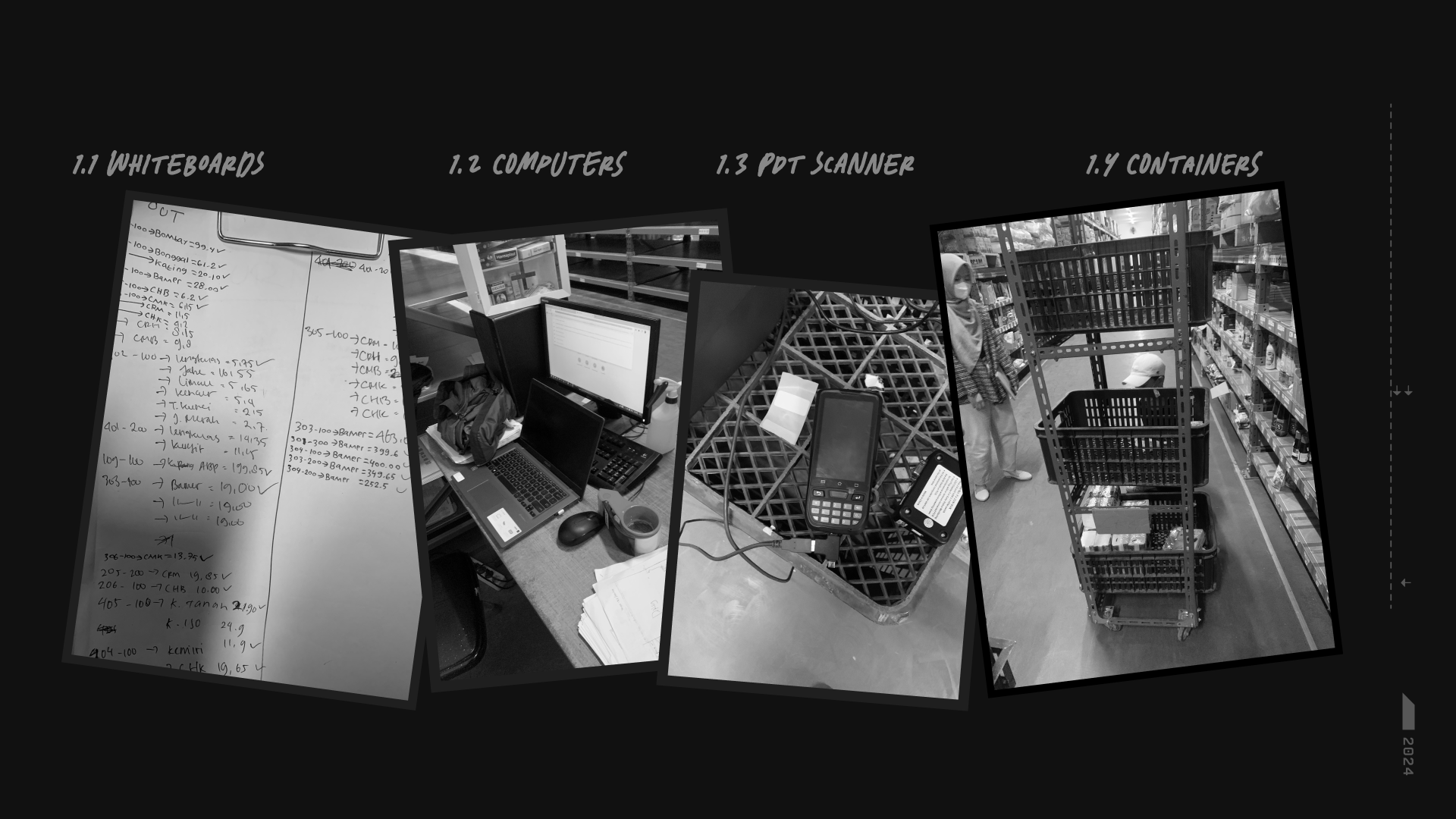
IMAGE
Warehouse Context - 2022
✦ CHALLENGES & IDEATION
The main challenge was to make sure the adaptation would go smoothly from manual to app workflow and at the same time find things to improve beyond the digital context.
On paper, the then-existing flow was straight forward: choose the location of the goods, grab the goods, and move the goods to the new intended location.
But a lot of the unseen problems were unfolding when the workflow was observed live. Besides the labor work [ie pick up goods, move/push the goods], the administrative workflow was done manually [Ie printing, writing changes on papers, putting the papers down, take the papers back, take notes, etc]. When combined, these workflow caused a lot of inefficiencies and human errors. Although there were devices scattered around, they were yet to be fully utilized properly.
LOADING CONTENT...
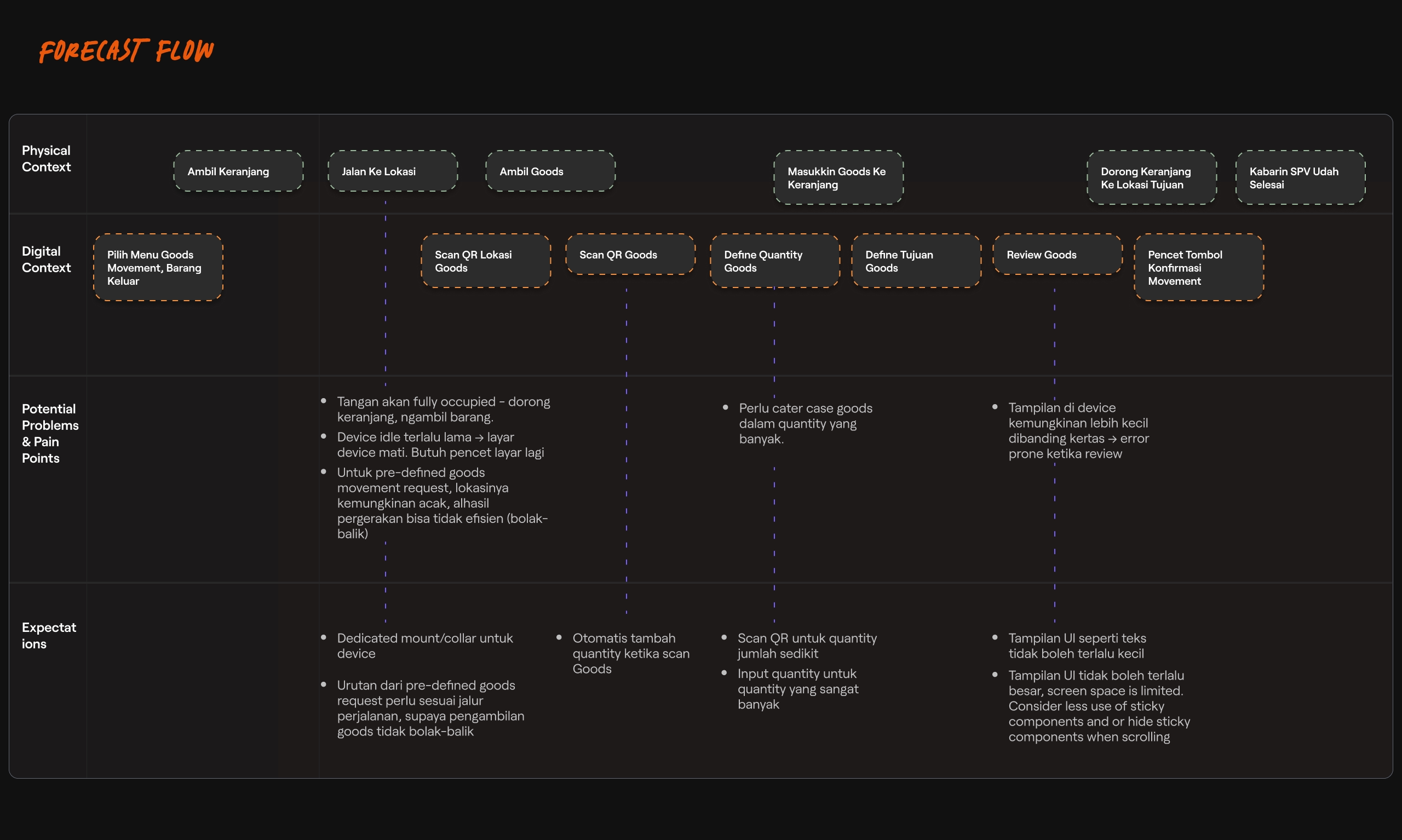
IMAGE
FORECAST FLOW MAPPING [Click to Zoom]
To better devise a solution, I made a “forecast" to help visualize the implication of the solution. It divided the main action to 2 parts, the physical and digital domain, alongside its potential pain points and opportunities. This is to make sure:
- The stakeholders are synced, aware, and aligned of what the challenges would be
- The workflow transition/adaptation goes smoothly
- Find ways to improve the workflow outside the digital context.
✦ DESIGN PRINCIPLE
To further strengthen the foundation and provide clear direction for the rest of the stakeholders, we discussed and agreed upon a general standardized flow, then I broke down the design principles.
LOADING CONTENT...
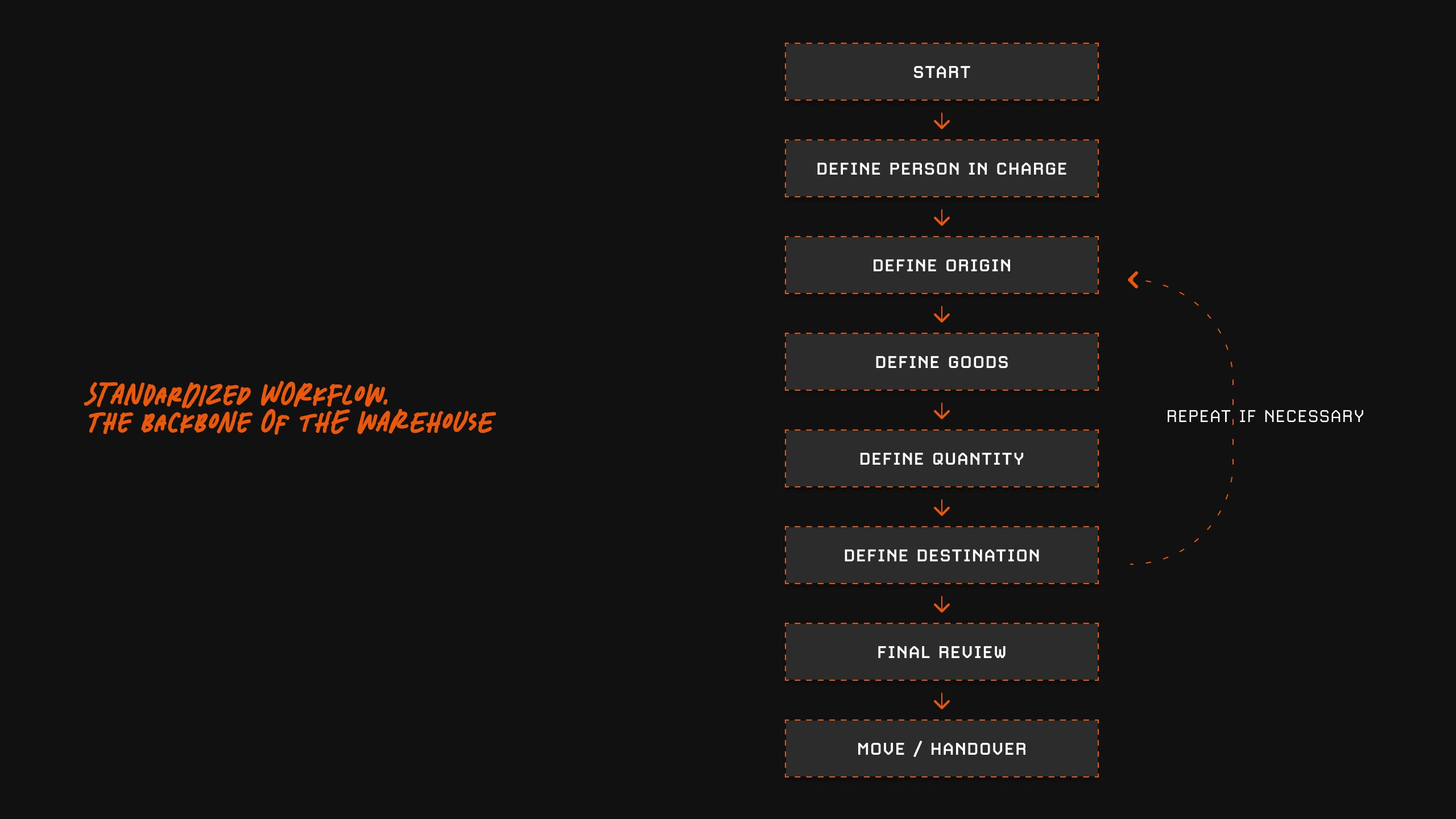
IMAGE
BACKBONE OF Goods Movement - Credits to Fitri
LOADING CONTENT...
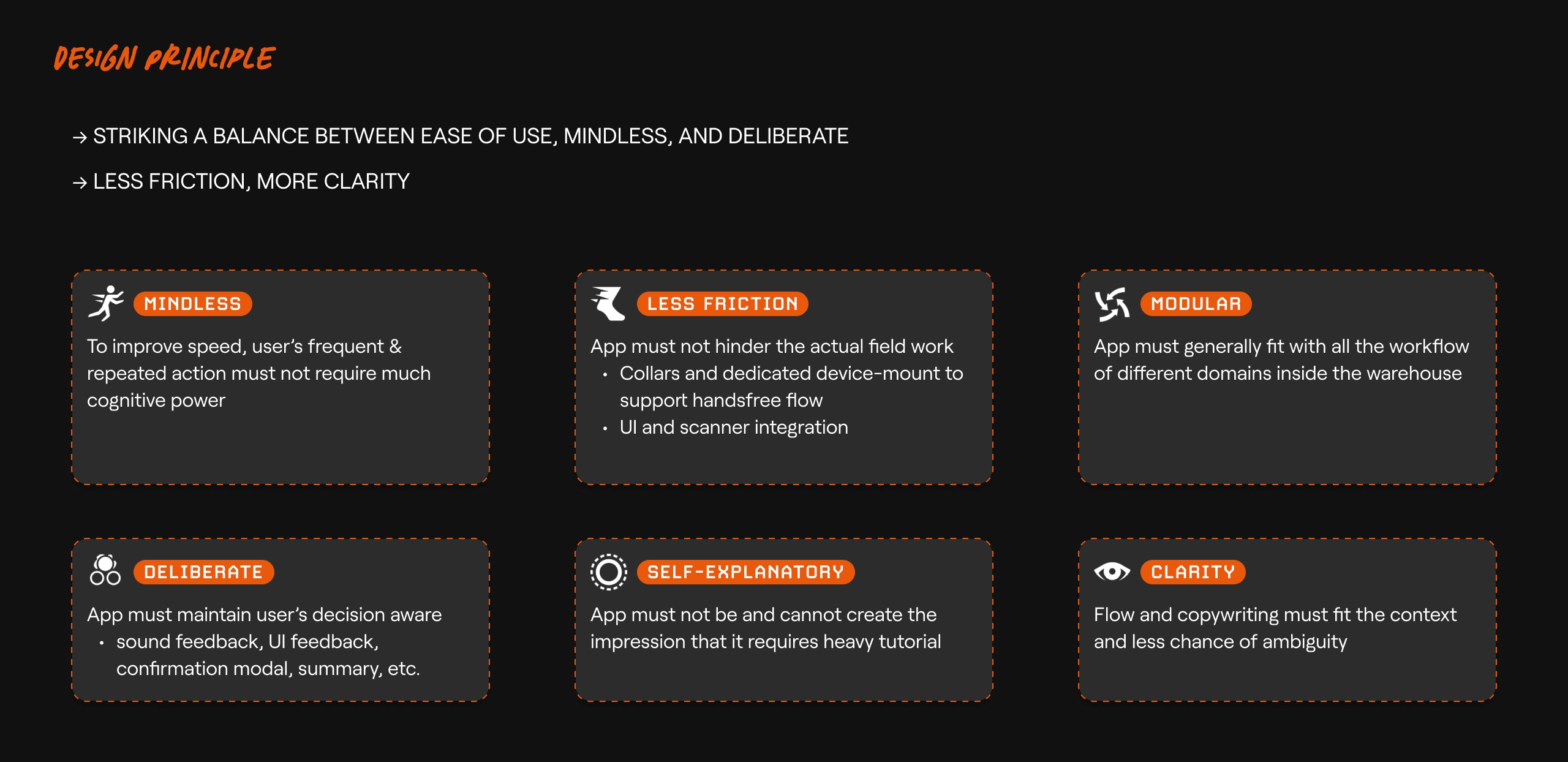
IMAGE
Design Principle - The breakdown helps keep the stakeholders principle in check.
LOADING CONTENT...
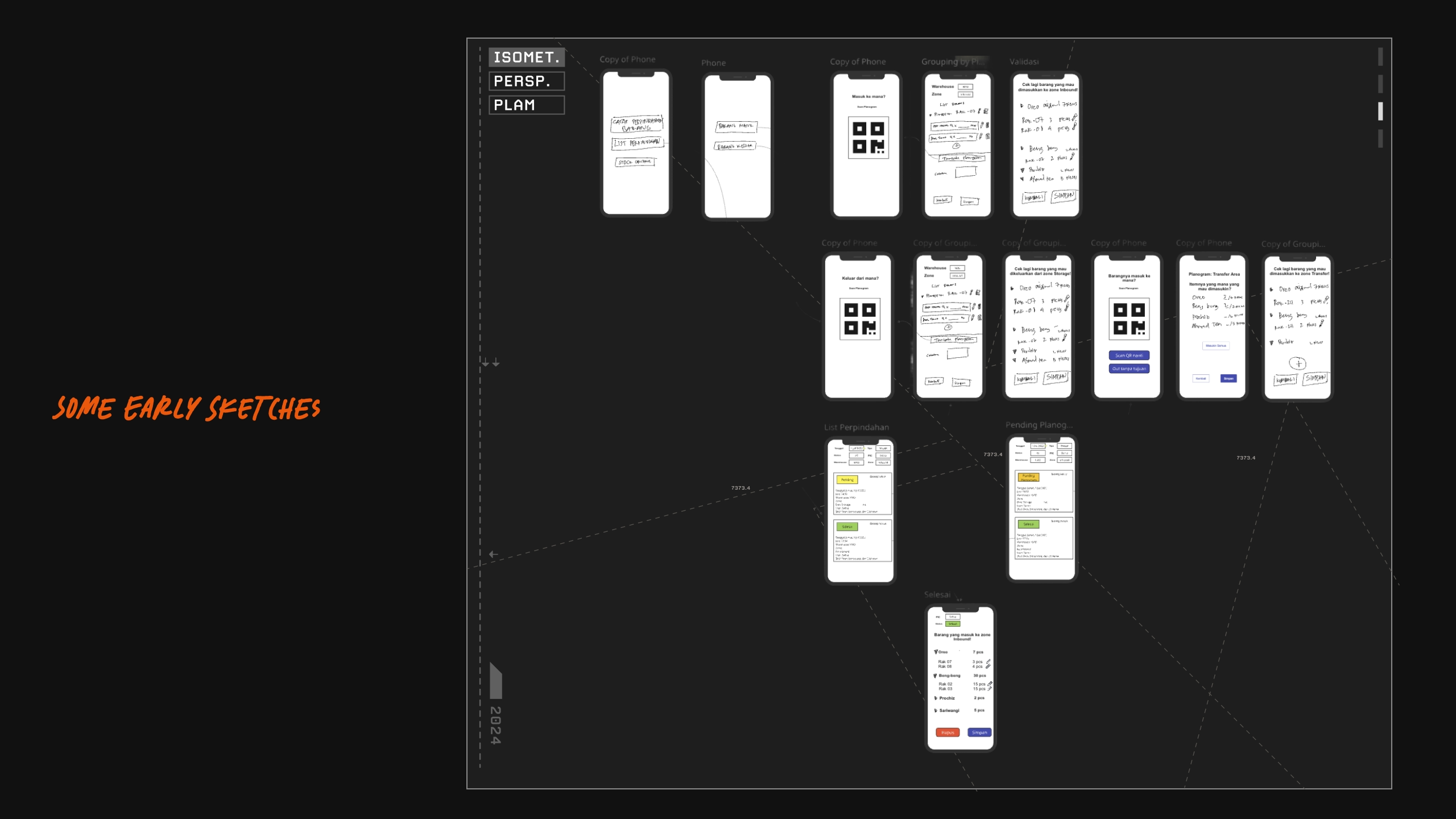
IMAGE
Early Sketches
The sketches are there for a reason
✦ COLLABORATION & EXECUTION [Design x Devs x PMs]
To prepare for an smoother development process, I laid out the basic design systems, nothing fancy, things like:
• What font to use
• Colors
• Button shapes etc.
The showcase below is essentially the core feature of the app and should help on representing my thought process and design consideration. [Due to NDA, I am unable to showcase the whole flow]
LOADING CONTENT...
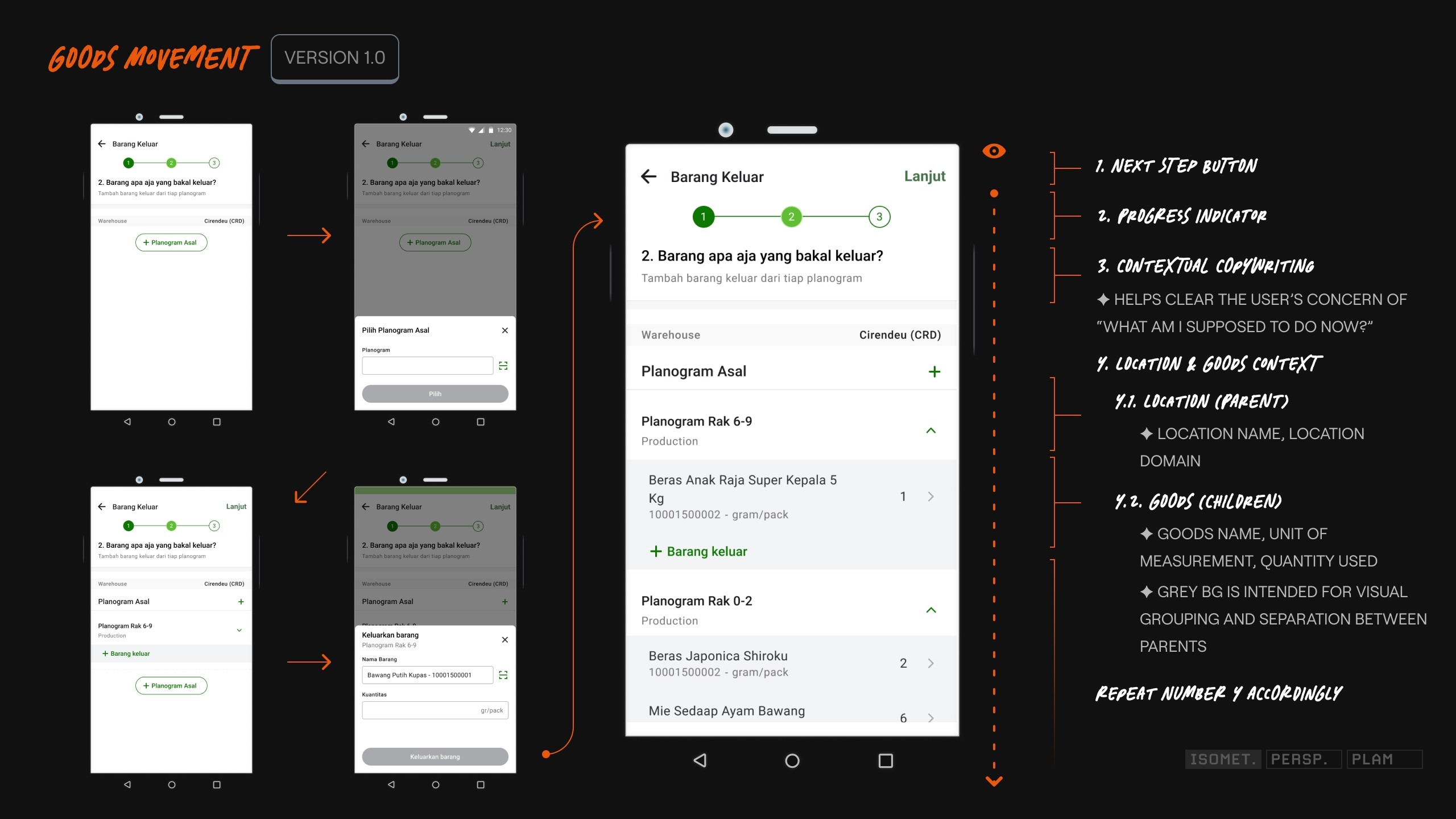
IMAGE
Part of the Goods Movement UI Flow
LOADING CONTENT...
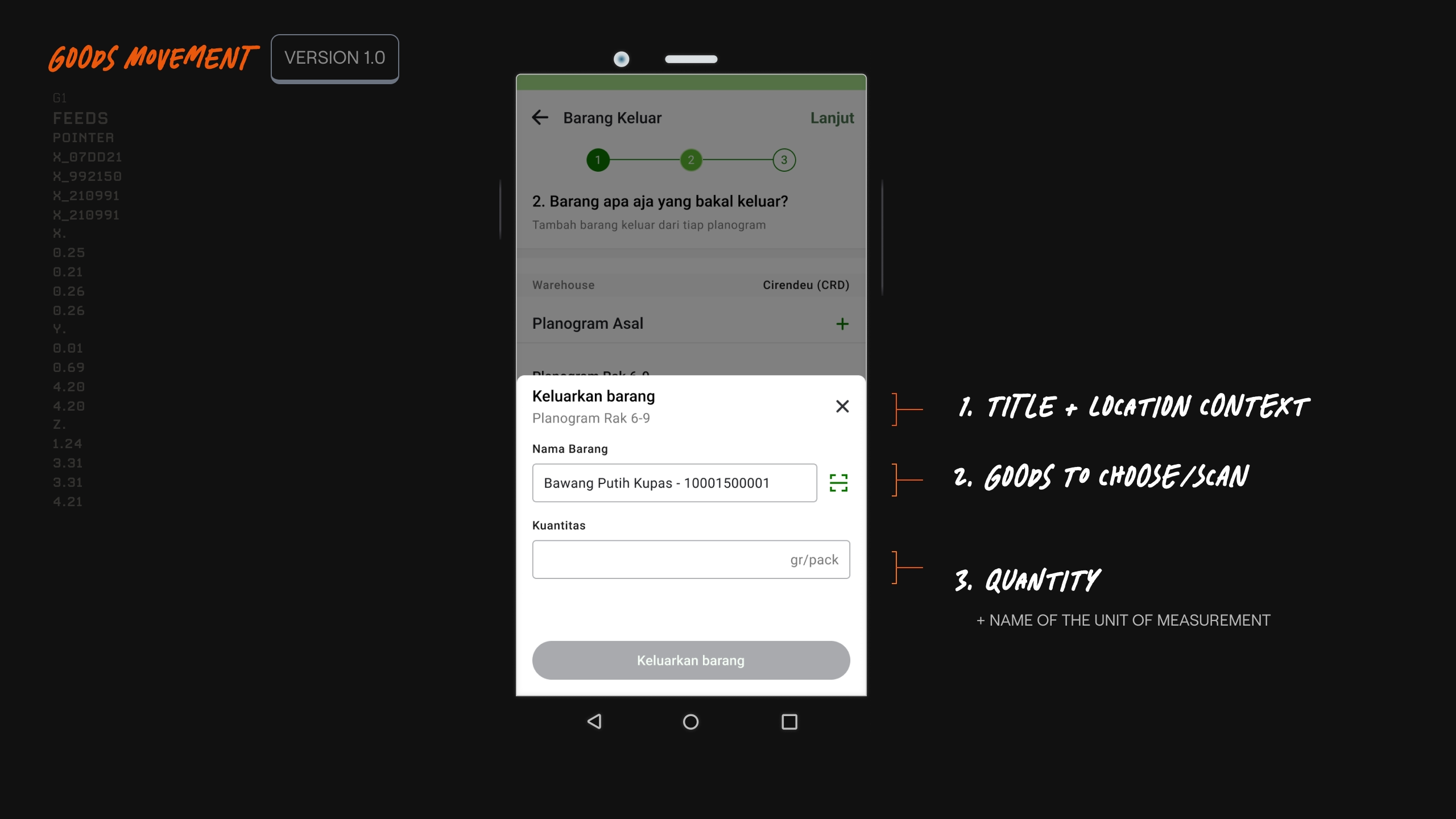
IMAGE
This is the UI showcasing the steps needed for a user to define the goods and its quantity once they have defined the location
The showcase above represents my idea for context clarity, specifically on the sub-level of the flow (designating the goods out from a specific location):
• What I'm currently doing?
• Where am I located?
• What goods to grab?
• How many do I need?
✦ TESTING & INSIGHTS
On the first ever test day, we did a quick introduction presenting the main flow. The product team didnt over-explain, and to let the participant ask instead, this was to validate if the app being self-explanatory. There were questions raised but it wast mostly technical questions regarding extreme edge-cases, but the main flow was perceived as easy breezy. The test was then conducted on a few selected domains for 1-2 weeks. Once the test was completed, we made improvements based on the feedback, which mostly were quality of life improvements.
LOADING CONTENT...
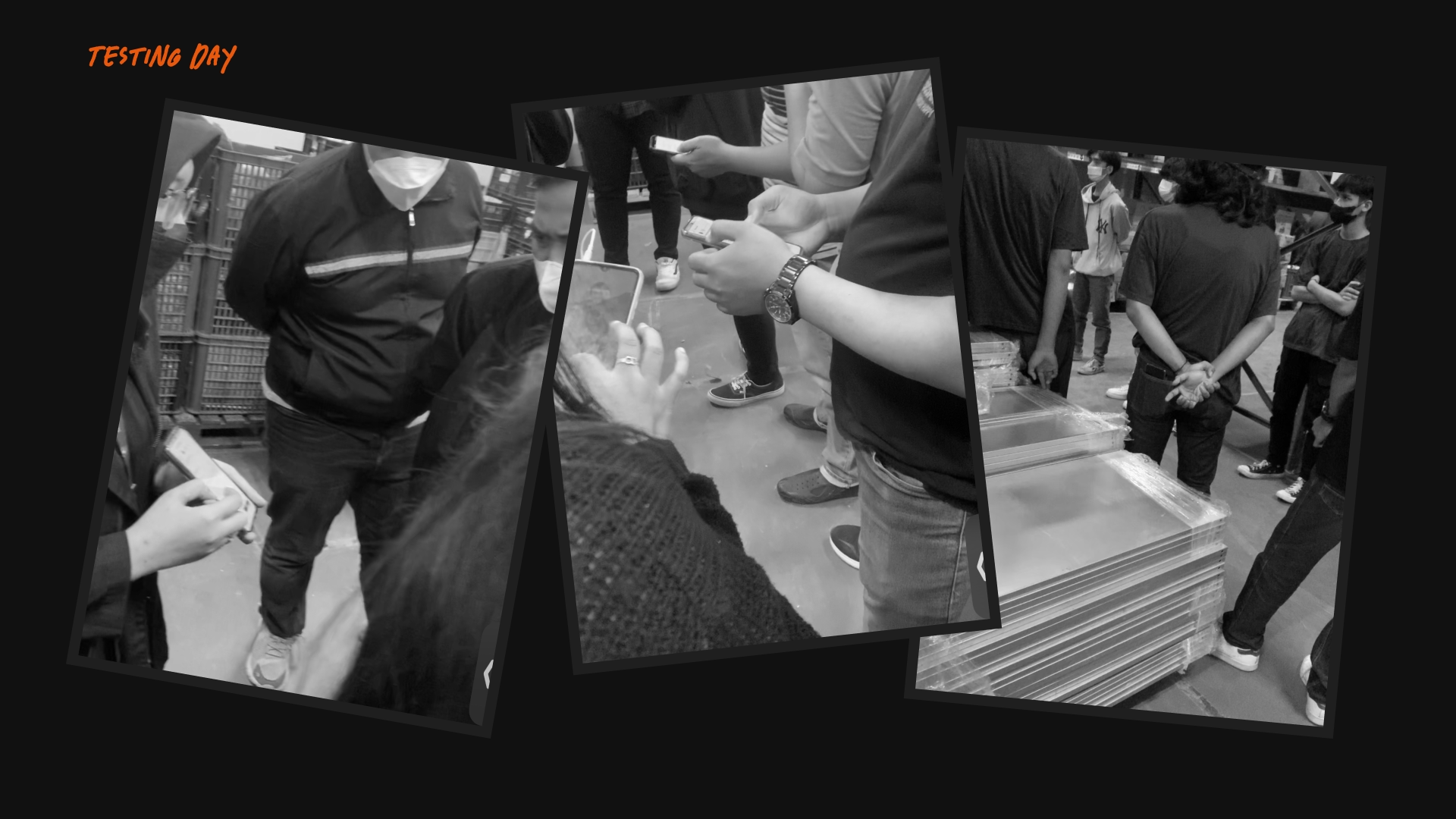
IMAGE
Testing day
LOADING CONTENT...
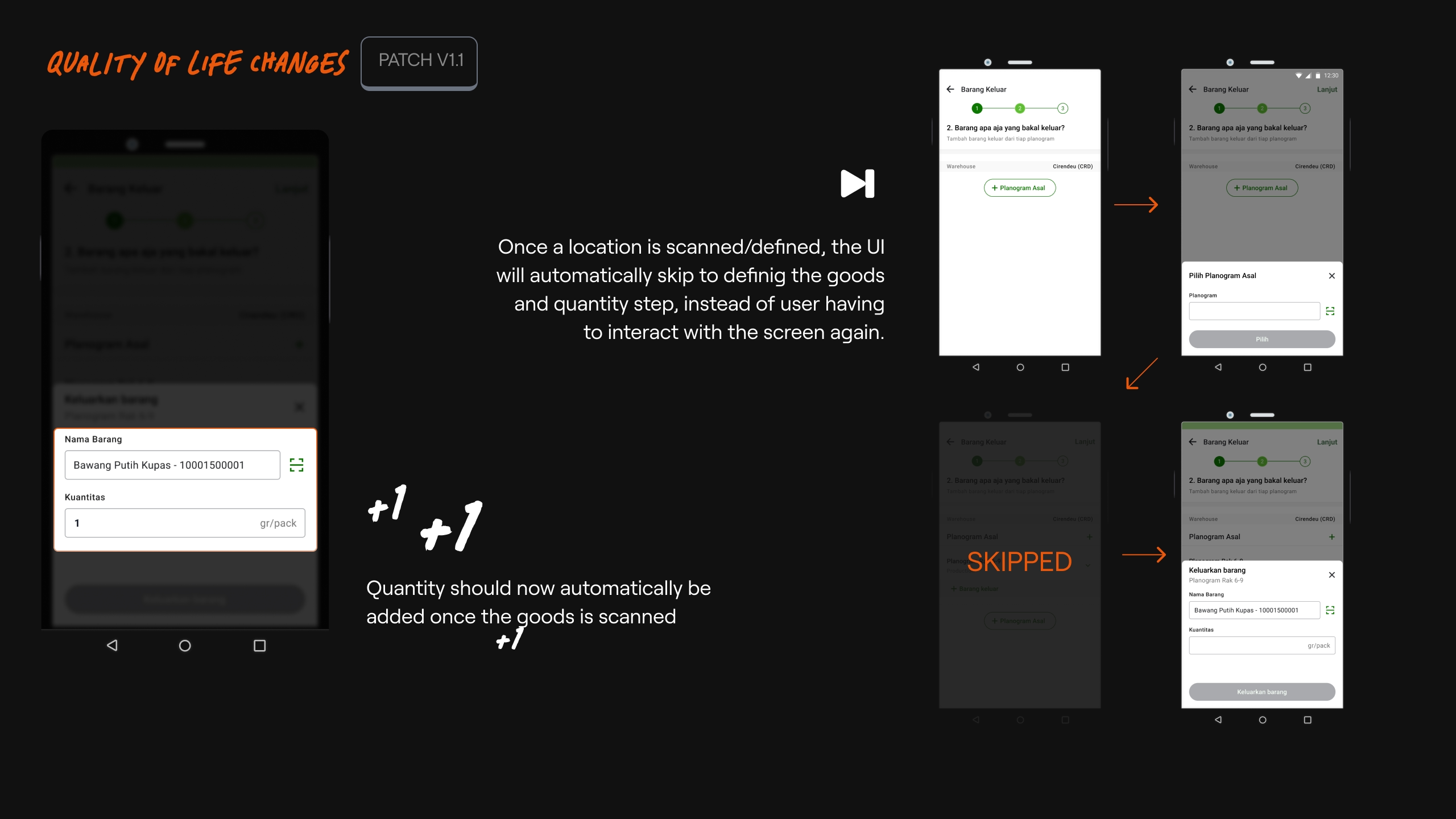
IMAGE
Quality of life improvements
✦ RESULTS!
The general administrative task was slashed from an average of 2.5 minutes down to 1 minute a ~60% reduction. For the non-administrative task, the app workflow proved to have almost no negative impact (ie pushing the containers, moving the goods, etc), compared to prior of the app release.
LOADING CONTENT...

IMAGE
SPEEEEED
The inventory accuracy was increasing from less than 50% to a whopping 99%. Although this result was also the result combined with the newly released stock opnam tools at the time.
LOADING CONTENT...

IMAGE
accuracy
✦ LEARNING FROM THE PAST, LOOKING TO THE FUTURE
The whole project experience, to me, was slightly different compared to the usual customer-facing app. With tools like this, I was able to directly observe the user behavior with much less bias. I just went around the warehouse and started observing, as most of the workers didnt know who I was, there was no pressure on them to perform the task "nicely" as a usual test session would, especially when time was at stake for them.
Interestingly, there was a first-time moment for me: at a certain point of time after the release, a very specific edge case was overlooked by the team. Paralel when fixes were on its way, surprisingly, the workers found a 'hacky' way to work around it. As the person who did the design, I was surprised about a loophole in my own work that even I was not aware of. Maybe the feeling was similar to that of a game designer with the gaming 'speedrun' community -- basically a community where the players compete to complete the game as fast as possible with any means necessary (without third-party software). This meant forcibly finding loopholes and exploits within the game design itself even after it is considered ready-to-release
The key difference is probably that between the worker and the gaming community, the former does it because of an obligation, while the latter does it for love and pleasure of the game. Nonetheless, from a designer perspective, it was a great experience.